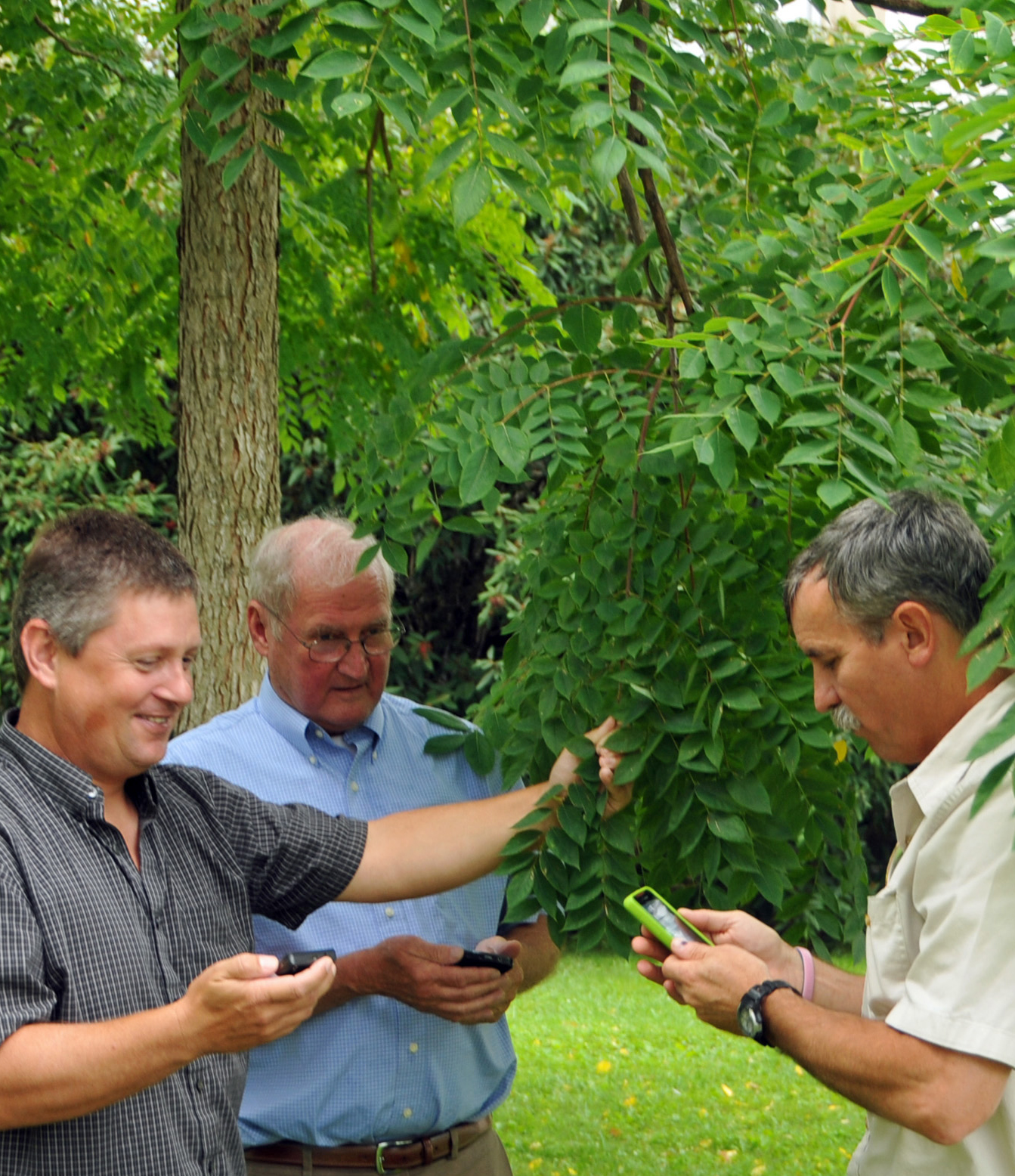Virginia Tech's tree app tops at Google Play

Researchers in the College of Natural Resources and Environment have developed a new application for Android smartphones that enables users to identify the woody plants around them. The app, titled Virginia Tech Tree Identification, is available as a free download on Google Play.
Alumni Distinguished Professor John Seiler and Laboratory Specialist John Peterson of the Department of Forest Resources and Environmental Conservation worked with forest landowner and programmer Bob Potts to develop the app.
Potts, a self-described amateur naturalist and frequent visitor to Seiler and Peterson’s Dendrology at Virginia Tech website, approached the two about the possibility of developing the app for use in the field by combining the website’s tree fact sheets and interview key with the smartphone’s portability and GPS capabilities.
“We want to get the app into the hands of as many people as possible, which is why it was important for us to make it available to the public at no cost,” Seiler said.
The app includes fact sheets for 969 woody plants with descriptions, range maps, and over 6,400 images of leaves, bark, flowers, fruit, twigs, and form.
Using the phone’s GPS receiver, network signal, or a user-entered location to narrow down the list of species native to an area, the application then becomes “Woody Plants of Where You Are Standing.” For example, it can become “Woody Plants of Southwestern Oregon” or “Woody Plants of Great Smoky Mountains National Park.”
The app is not limited by the location of the user’s smartphone; it can display data for virtually any address, GPS coordinates, or location description in North America entered by the user.
With the app’s interview key, users can further narrow the list of possible species by answering a series of simple tree attribute questions like where the tree is growing, how the leaves are shaped, or what the flowers or fruits look like.
If users have some knowledge of the species they are trying to identify, they can narrow the species list by typing in a keyword. Users can also email tree-related questions and photos directly to “Dr. Dendro,” Seiler’s online alter ego.
Potts programmed the app; Peterson created digitized range maps for each species, worked on the interview key, and manipulated the database; and Seiler provided most of the photographs and lent his eye for design, product testing, and end-user market research. Professional application developer Andrew Meeks, who graduated from Virginia Tech in 2004 with a degree in wildlife science, helped solve some technical issues.
The app became the most downloaded tree identification app available from Google Play just three months after its release. At press time, it had over 13,000 downloads and was rated 4.5 out of five stars. An iPhone version is currently in development.
In addition to the Android app, Seiler and Peterson recently released the third edition of their DVD-based software program Woody Plants in North America. The program, which expands on the tree fact sheets and includes side-by-side species comparisons, a quiz function, and thousands more photos, serves as a comprehensive tutorial for species identification. This popular resource, developed and refined over the course of 15 years, is used by students and practitioners alike.
“I’m proud of what we have built,” Peterson remarked. “I have felt thankful and fortunate from the beginning. John Seiler and I are a good tree identification software team.”




